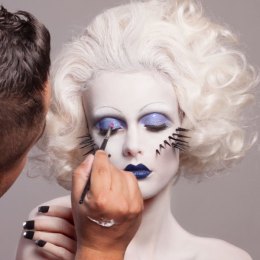We have a very unique, emotional relationship with makeup (if we’re makeup lovers, that is!).
It’s not just pretty paint; it’s an expression of our personality and the face we want to present to the world, literally and figuratively, on any given day.
It makes us feel good about ourselves generally, perks us up on a bad day, gives us that extra burst of confidence for an important meeting or special occasion, and, if we suffer skin flaws that cause self-consciousness, it’s a panacea to the soul and ego to be able to cover them up, or at least minimise them before we face the world.
But the ethos behind makeup brands is becoming a significant factor in people’s choice of products: the demand for eco-conscious products that are healthy for the skin and body (no nasties), contain sustainable and natural ingredients to a significant degree, if not entirely.
And one that’s become the biggie in 2017 – products that are not tested on animals, that usually causes them devastating distress and harm.
“Even if wearing lipstick isn’t your thing, you probably use a number of toiletry and personal care products – from soap, shampoo and toothpaste, to deodorant, moisturiser or shaving cream,” says consumer watchdog Choice.
“To establish their safety, though, some of these products may have been tested on animals. And for a lot of people, smelling nice just isn’t worth that price. So how can consumers work out which products are tested on animals? And what are the alternatives to animal testing?
“Australia doesn’t require cosmetics to be tested on animals, as long as suppliers can provide evidence for their ingredients’ safety.
“In fact, with a growing global trend towards the banning of cosmetics that are tested on animals (the European Union, India and Israel have led the charge), there are moves afoot for Australia to follow suit.
“There are many ways to establish a cosmetic product’s safety without the use of live animals, such as:
- In-vitro techniques involving donated human tissue or cell cultures using donated human corneas from eye banks, or synthetic or reconstructed human skin
- Using human volunteers
- Computer modelling and maths simulation programs, for example to predict a chemical’s toxicity or irritancy and its likely interaction with other compounds, based on what’s known already about substances with a similar structure.
“Third party certification is what to look for when shopping for cruelty-free cosmetics
“There are several independent third parties that certify products as having not been tested on animals, including Choose Cruelty Free, the Leaping Bunny and PETA .
“These organisations compile lists of companies that sign statutory declarations promising they do not test nor allow others to test on their behalf any products or ingredients on animals.
“They do not certify companies that sell their products in markets like China, where animal testing is required.
“However, it’s important to note that in some cases even companies that abstain from the Chinese market may be penalised by the certifiers on the basis of their parent company’s stance on animal testing.
“Avoid products with ‘new’ or ‘improved’ ingredients if you can’t establish that they haven’t been tested on animals.”




